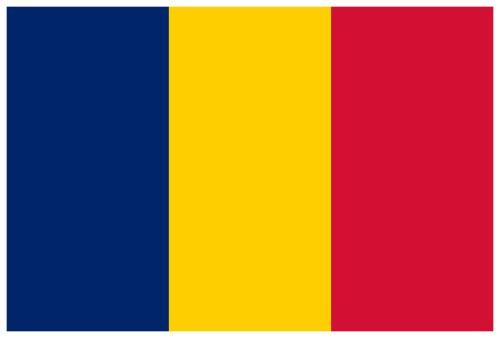
Flag of Chad
February
Weather in February
February marks the transition from winter to spring in Chad, with temperatures gradually starting to rise across all three climatic regions of the country. The north, which includes the Sahara Desert, experiences an increase in daytime temperatures, with averages ranging from 25°C (77°F) to 30°C (86°F). Despite the rise, nighttime temperatures remain relatively cold, dropping to between 5°C (41°F) and 10°C (50°F). This continues to be a significant contrast from the scorching heat the region experiences during the summer months.
In the central region of Chad, the city of N'Djamena witnesses warmer temperatures compared to January, with daily averages ranging from 20°C (68°F) to 37°C (98.6°F). The weather continues to be characterized by clear, sunny days and mild evenings, making it an enjoyable time to explore the city's bustling markets and historic sites.
The southern region, which includes cities like Moundou, experiences average temperatures between 20°C (68°F) and 35°C (95°F), maintaining its position as the warmest region of Chad during February. The weather remains dry during this time, providing excellent conditions for outdoor activities and exploration.
In comparison to January, February experiences a slight increase in temperatures across Chad, signifying the end of the winter season and the advent of spring. Looking forward to March, temperatures continue their upward trend, heralding the imminent arrival of the hot season, particularly in the northern and central regions.
In the central region of Chad, the city of N'Djamena witnesses warmer temperatures compared to January, with daily averages ranging from 20°C (68°F) to 37°C (98.6°F). The weather continues to be characterized by clear, sunny days and mild evenings, making it an enjoyable time to explore the city's bustling markets and historic sites.
The southern region, which includes cities like Moundou, experiences average temperatures between 20°C (68°F) and 35°C (95°F), maintaining its position as the warmest region of Chad during February. The weather remains dry during this time, providing excellent conditions for outdoor activities and exploration.
In comparison to January, February experiences a slight increase in temperatures across Chad, signifying the end of the winter season and the advent of spring. Looking forward to March, temperatures continue their upward trend, heralding the imminent arrival of the hot season, particularly in the northern and central regions.
- N'Djamena - February »
On the first day of February in N'Djamena sunrise is at 06:24 and sunset at 18:01. In N'Djamena rain does not fall in January, February and December. - Moundou - February »
February is the least humid month in Moundou, with an average relative humidity of 28%. On the first day of February in Moundou, sunrise is at 06:16 and sunset at 18:02. - Sarh - February »
With an average relative humidity of 29%, February is the least humid month in Sarh. February and November, with an average of 8.7h of sunshine, are months with the most sunshine in Sarh. - Abeche - February »
February and November, with an average of 10.4h of sunshine, are months with the most sunshine in Abeche. The months with the most sunshine in Abeche are February and November, with an average of 10.4h of sunshine. - Kelo - February »
Weather in Kelo, Chad takes a turn in February with an increment in maximum temperature to 38.4°C (101.1°F) from 35.3°C (95.5°F) in January. The least humid month in Kelo is February, with an average relative humidity of 13%. - Am Timan - February »
Am Timan's weather shows a minor temperature rise with the arrival of February, moving from a torrid 36.5°C (97.7°F) in January to a still very hot 39.5°C (103.1°F). With an average relative humidity of 12%, February is the least humid month in Am Timan. - Bongor - February »
In Bongor rain does not fall in January, February and December. As January transitions into February in Bongor, a subtle temperature shift is observed, with average highs adjusting from a hot 34.6°C (94.3°F) to a sweltering 37.8°C (100°F). - Mongo - February »
January and February, with an average of 7.7h of sunshine, are months with the least sunshine in Mongo. The months with the least sunshine in Mongo are January and February, with an average of 7.7h of sunshine. - Ati - February »
January and February, with an average of 7.7h of sunshine, are months with the least sunshine in Ati, Chad. In February, on the first day of the month, sunrise is at 06:13 and sunset at 17:47. - Oum Hadjer - February »
February through June, September and October, with an average maximum UV index of 8, are months with the highest UV index in Oum Hadjer, Chad. On the first day of February in Oum Hadjer, Chad, sunrise is at 06:07 and sunset at 17:41.
Updated: May 24, 2024
Published by: Weather Atlas | About Us
Data Sources | Weather Forecasting & Climate
Published by: Weather Atlas | About Us
Data Sources | Weather Forecasting & Climate


